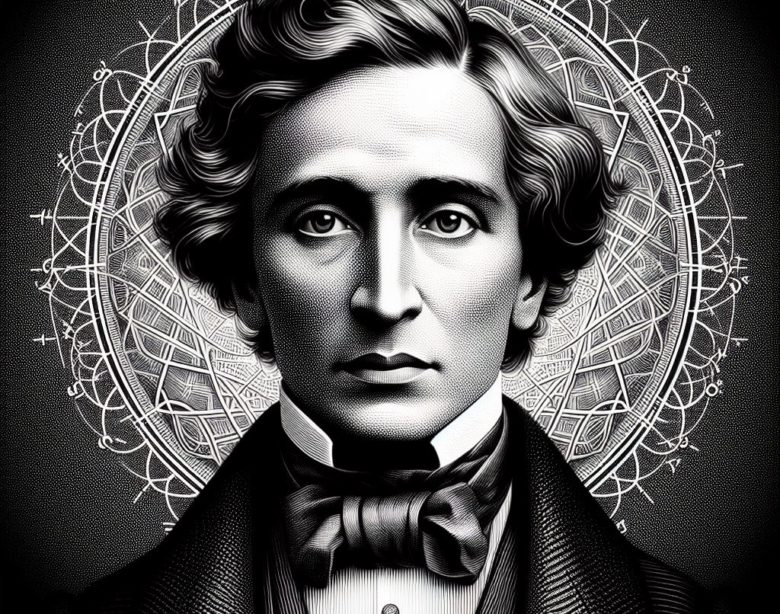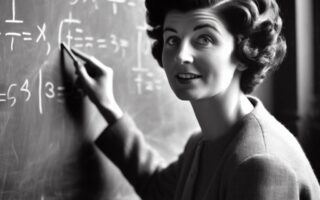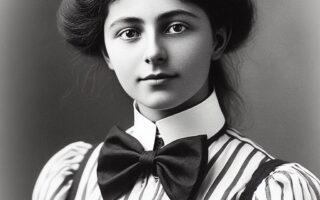Revised: September, 2024.
Georg Cantor is a name that resonates deeply in the world of mathematics, not only because of his revolutionary work in set theory but also because of the philosophical implications his discoveries had on the concept of infinity. Born in 1845 in Saint Petersburg, Russia, Cantor grew up in a time when mathematics was undergoing significant changes, particularly in the fields of analysis and number theory. Cantor’s contributions, however, were not just technical achievements in these fields; they were revolutionary in that they introduced a new way of thinking about numbers, sets, and the very nature of mathematical infinity. Despite facing criticism and resistance from his contemporaries, Cantor’s work on set theory, infinite numbers, and transfinite arithmetic laid the foundation for much of modern mathematics.
Early Life and Education
Georg Ferdinand Ludwig Philipp Cantor was born on March 3, 1845, to a family of musicians and intellectuals. His father, a successful businessman, moved the family from Saint Petersburg to Germany for health reasons. From an early age, Cantor showed a strong aptitude for mathematics, and his talents were nurtured in the academic environment of Berlin, where he studied under prominent mathematicians like Karl Weierstrass and Leopold Kronecker.
Cantor’s early academic work focused on number theory and mathematical analysis, subjects that would later play significant roles in his development of set theory. He received his doctorate in 1867 from the University of Berlin and shortly thereafter began teaching at the University of Halle, where he would spend much of his academic career.
The Birth of Set Theory
Cantor’s most famous contribution to mathematics is the development of set theory, a branch of mathematical logic that studies collections of objects, known as sets. Set theory provides the foundation for virtually all of modern mathematics, including algebra, geometry, and topology. But before Cantor’s work, the idea of infinite sets and different sizes of infinity were largely philosophical concepts, not mathematical ones.
Cantor’s breakthrough came when he began studying the uniqueness of trigonometric series, which led him to explore the nature of infinite sets. In 1874, Cantor published his first major paper on set theory, introducing the concept of one-to-one correspondence between sets. In this paper, he demonstrated that the set of real numbers (points on a line) is “larger” than the set of natural numbers (counting numbers), even though both sets are infinite.
This was a revolutionary idea. Cantor showed that not all infinities are the same size—there are different levels, or cardinalities, of infinity. The set of natural numbers is countably infinite, meaning its elements can be listed in a sequence (1, 2, 3, etc.). In contrast, the set of real numbers is uncountably infinite, meaning its elements cannot be arranged in a sequence in the same way.
Cantor’s Diagonal Argument
One of Cantor’s most famous techniques is the diagonal argument, which he used to prove the uncountability of the real numbers. Cantor’s diagonal argument showed that, given any list of real numbers, you can always construct a new real number that is not on the list. This result implies that no matter how you attempt to list the real numbers, there will always be more real numbers that are left out, proving that the set of real numbers is strictly larger than the set of natural numbers.
This was a radical departure from traditional views of infinity and set the stage for modern mathematics, where different sizes of infinity are treated as standard mathematical objects. Cantor’s diagonal argument is now considered one of the most elegant and important mathematical proofs, laying the groundwork for further developments in set theory, topology, and even computer science.
The Continuum Hypothesis
Another of Cantor’s major contributions was the Continuum Hypothesis, a proposition that addresses the question of whether there is a set whose size is between that of the natural numbers and the real numbers. In other words, is there a set that is larger than the set of natural numbers but smaller than the set of real numbers?
Cantor believed that no such set exists, a conjecture known as the Continuum Hypothesis. He was unable to prove this hypothesis, and it remains one of the most important open questions in mathematics. In 1900, the German mathematician David Hilbert included the Continuum Hypothesis as the first problem in his famous list of 23 unsolved problems that would define the direction of 20th-century mathematics.
The Continuum Hypothesis was later shown by Kurt Gödel and Paul Cohen to be independent of the standard axioms of set theory, meaning that it can neither be proved nor disproved using the usual mathematical rules. This result, discovered in the mid-20th century, confirmed Cantor’s intuition that the hypothesis was deeply connected to the fundamental nature of mathematics and logic.
Transfinite Numbers and Cardinality
Cantor’s work did not stop with the discovery of uncountable sets. He went on to define a whole new class of numbers, which he called transfinite numbers, to describe the sizes of infinite sets. The smallest transfinite number is aleph-null (ℵ₀), which represents the size of the set of natural numbers. Larger transfinite numbers describe the sizes of larger infinite sets, like the set of real numbers.
This development of transfinite numbers allowed Cantor to formalize the notion of different sizes of infinity and establish the basic framework for modern set theory. His work on transfinite numbers and cardinalities has influenced many areas of mathematics, including number theory, topology, and mathematical logic.
Resistance and Controversy
Despite the revolutionary nature of his discoveries, Cantor faced significant opposition from the mathematical community. His ideas about infinite sets and transfinite numbers were seen as too radical, and many of his contemporaries, including his former teacher Leopold Kronecker, rejected his work. Kronecker, in particular, was a staunch opponent of Cantor’s ideas, famously stating, “God made the integers, all else is the work of man.”
Kronecker’s disdain for Cantor’s work was part of a larger philosophical divide within the mathematical community, between those who believed in a strict, finite approach to mathematics and those who were willing to embrace the abstract, infinite concepts that Cantor was proposing. This opposition, combined with personal struggles, took a toll on Cantor’s mental health. He suffered from periods of depression throughout his life and was hospitalized multiple times.
Despite these challenges, Cantor continued to work on set theory and to correspond with other leading mathematicians of his time, including Richard Dedekind and David Hilbert, who were more supportive of his ideas. Over time, Cantor’s work gained greater acceptance, and by the early 20th century, set theory had become a standard part of the mathematical canon.
Cantor’s Legacy
Georg Cantor’s contributions to mathematics cannot be overstated. His development of set theory and transfinite numbers revolutionized the field and laid the foundation for many of the mathematical advances that followed in the 20th century. Today, set theory is the basis of modern mathematics, underpinning fields as diverse as topology, analysis, and logic.
Cantor’s work also had profound implications for the philosophy of mathematics. His ideas about infinity challenged traditional notions of mathematical reality and forced mathematicians to reconsider the nature of numbers and sets. Cantor’s discoveries led to the development of axiomatic set theory, which formalized the principles of set theory and provided a rigorous foundation for the rest of mathematics.
Perhaps most importantly, Cantor’s work on infinite sets opened the door to new ways of thinking about mathematical structures, leading to the development of fields like category theory and model theory. His insights into the nature of infinity continue to influence mathematicians and philosophers alike, and his work remains a subject of active research today.
Conclusion
Georg Cantor’s groundbreaking work on set theory, infinite sets, and transfinite numbers changed the course of mathematical history. Despite the opposition he faced during his lifetime, Cantor’s ideas have stood the test of time and have become an integral part of modern mathematics. His contributions not only expanded our understanding of infinity but also reshaped the very foundation of mathematics, influencing fields far beyond set theory itself.
Cantor’s legacy is one of bold, visionary thinking that challenged the mathematical orthodoxy of his time. His work continues to inspire mathematicians today, reminding us that the pursuit of knowledge often requires the courage to question long-held beliefs and explore new, uncharted territories.
Please Visit Our Sponsors:
We only support vendors that we use ourselves in our home. The links below are our own links or affiliate links but know that we use all of these now, or have in the past. As the author/creator of this blog, I also tutor mathematics on Wyzant, sell on Etsy, create content on TpT, and learn Korean on Rosetta Stone.





